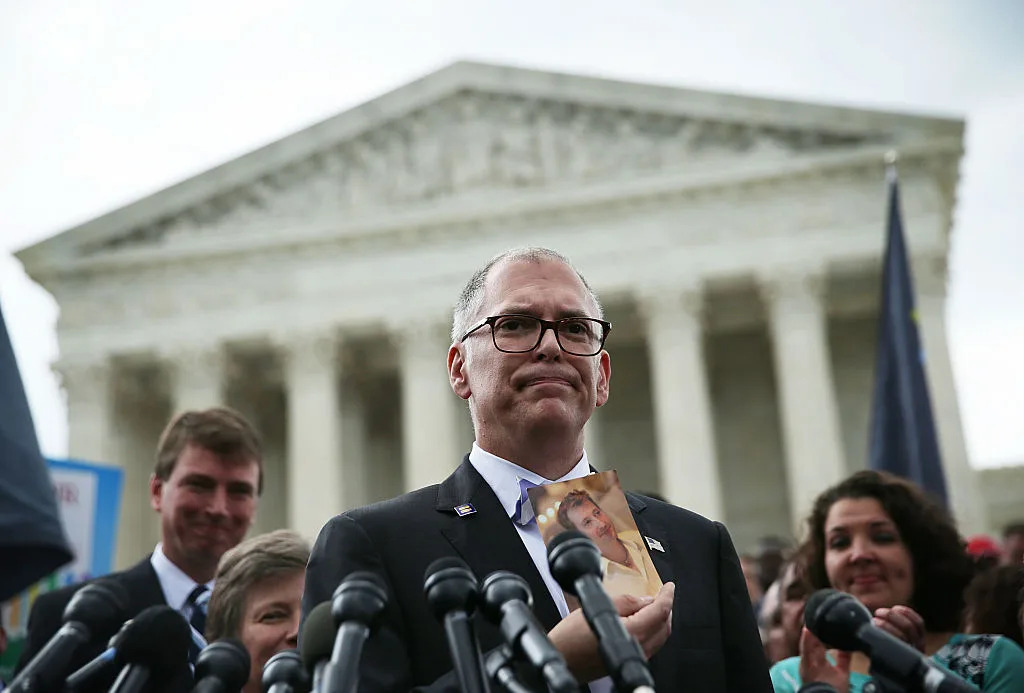
Pllaintiff Jim Obergefell, of Ohio, holds a photo of his late husband John Arthur as he speaks to members of the media after the U.S. Supreme Court handed down a ruling regarding same-sex marriage June 26, 2015 outside the Supreme Court in Washington, DC. The high court ruled that same-sex couples have the right to marry in all 50 states. (Photo by Alex Wong/Getty Images)
Ohio LGBTQ+ advocates will soon start collecting signatures for their equal rights proposals as the U.S. Supreme Court has been asked to review its 2015 same-sex marriage decision.
It’s been 10 years since SCOTUS decided in Obergefell v. Hodges, a case originating out of Ohio where justices determined that same-sex couples have the fundamental right to marry. The ruling legalized same-sex marriage across the country.
But the Ohio Constitution still states, “Only a union between one man and one woman may be a marriage valid in or recognized.”
This means that if the justices overturn Obergefell, same-sex marriage would be illegal in Ohio once again.
“Some people hear equal rights and think, ‘Well, I already have all my rights. I have what I need,'” Lis Regula with Ohio Equal Rights said. “That’s not necessarily the case for everybody.”
Kim Davis, a former clerk in Kentucky who was jailed for several days in 2015 after denying a same-sex couple their marriage license, asked the high court Monday to take up a case that would overturn that decision.
In 2022, Justice Clarence Thomas said that the Supreme Court of the United States should reconsider landmark cases such as Obergefell.
Regula knows he can’t change what the court will do, he said, but there are other options.
“What Ohioans do have control over is being able to put forward ballot initiatives that help to protect our state, help to protect our community,” he said.
Ohio Equal Rights just got one step closer to enshrining marriage equality into the state constitution.
On Friday, Attorney General Dave Yost certified two separate constitutional amendment proposals: one would remove a provision from the state Constitution that prohibits same-sex marriage, and the other would prohibit discrimination by state and local governments because of “race, color, creed or religion, sex, sexual orientation, gender identity or expression regardless of sex assigned at birth, pregnancy status, genetic information, disease status, age, disability, recovery status, familial status, ancestry, national origin, or military and veteran status.”
Ohio Equal Rights has been approved to start collecting signatures for the Ohio Right to Marry Amendment, which would remove the provision that bans same-sex marriage, something that Christian conservative activist Lizzie Marbach is prepared to fight.
“It directly goes against our First Amendment right to practice our religion, but also it is spitting in the face of God because not only does he define what marriage is, but he’s who created the sexes,” Marbach said.
Just because someone has an interpretation of the Bible doesn’t mean it applies to everyone, Regula said.
“That’s perfectly fine for her to believe,” Regula said. “But we are not a Christian nation.”
There is a specific carveout for religious organizations and members of clergy who will be able to deny marriage requests, which Marbach appreciated but said wasn’t enough.
She said her faith is why she is also against Ohio Equal Rights’ other ballot proposal, the Ohio Equal Rights Amendment, which would prohibit government discrimination based on sexual orientation and gender identity.
This is just meant to fight against the legislation lawmakers passed last year, she said.
“It’s important not to allow men into women’s bathrooms and boys into young girls’ sports and all of those things,” she said.
Ohio Equal Rights was required to put forward two proposals instead of one that focused on all LGBTQ+ rights. Republicans on the Ohio Ballot Board said that same-sex marriage was fundamentally different than anti-discrimination protections.
This means that instead of only needing to collect about 415,000 signatures for one constitutional amendment, supporters would need to get that amount for each of the two amendments — 830,000 valid signatures. For all ballot proposals, campaigns need valid signatures from at least 44 of Ohio’s 88 counties.
Regula wants to get this on the November 2026 ballot.
“I think being able to pass this would be a huge bright spot,” he said.
Already, GOP politicians, like Sec. of State Frank LaRose, have begun fundraising off of the amendments.
However, LaRose — and each other politician we have seen — have only mentioned the Equal Rights Amendment, not marriage equality.
In a fundraising email, the secretary asked for help to fight the Democrats who are trying to “Enshrine special protections for extreme transgender policies in schools, businesses and even churches.”
Follow WEWS statehouse reporter Morgan Trau on X and Facebook.
This article was originally published on News5Cleveland.com and is published in the Ohio Capital Journal under a content-sharing agreement. Unlike other OCJ articles, it is not available for free republication by other news outlets as it is owned by WEWS in Cleveland.
SUBSCRIBE: GET THE MORNING HEADLINES DELIVERED TO YOUR INBOX


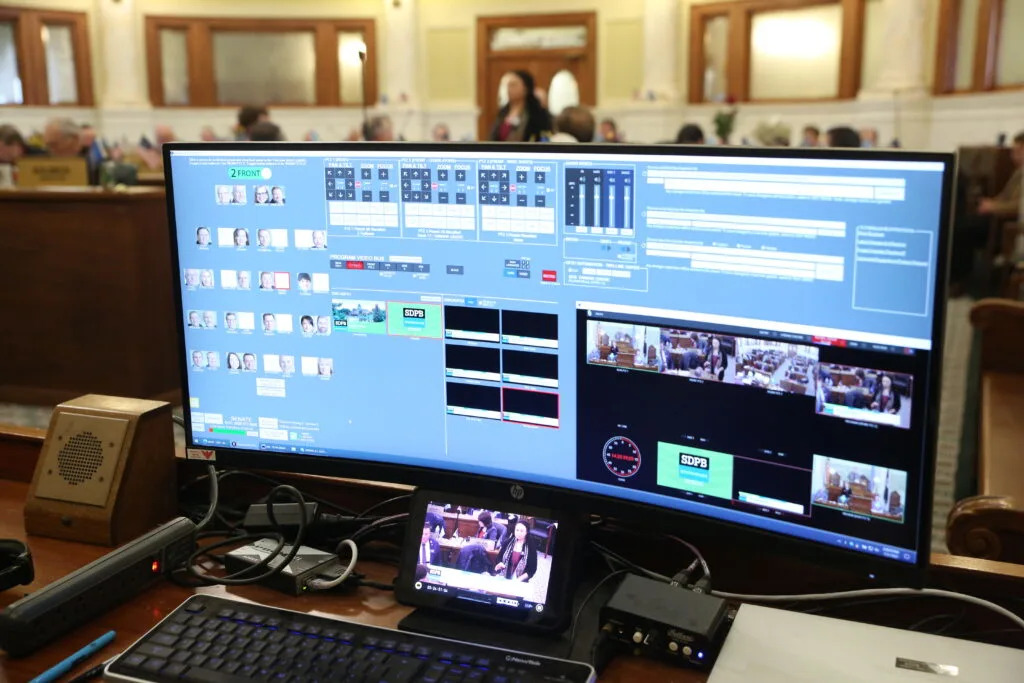
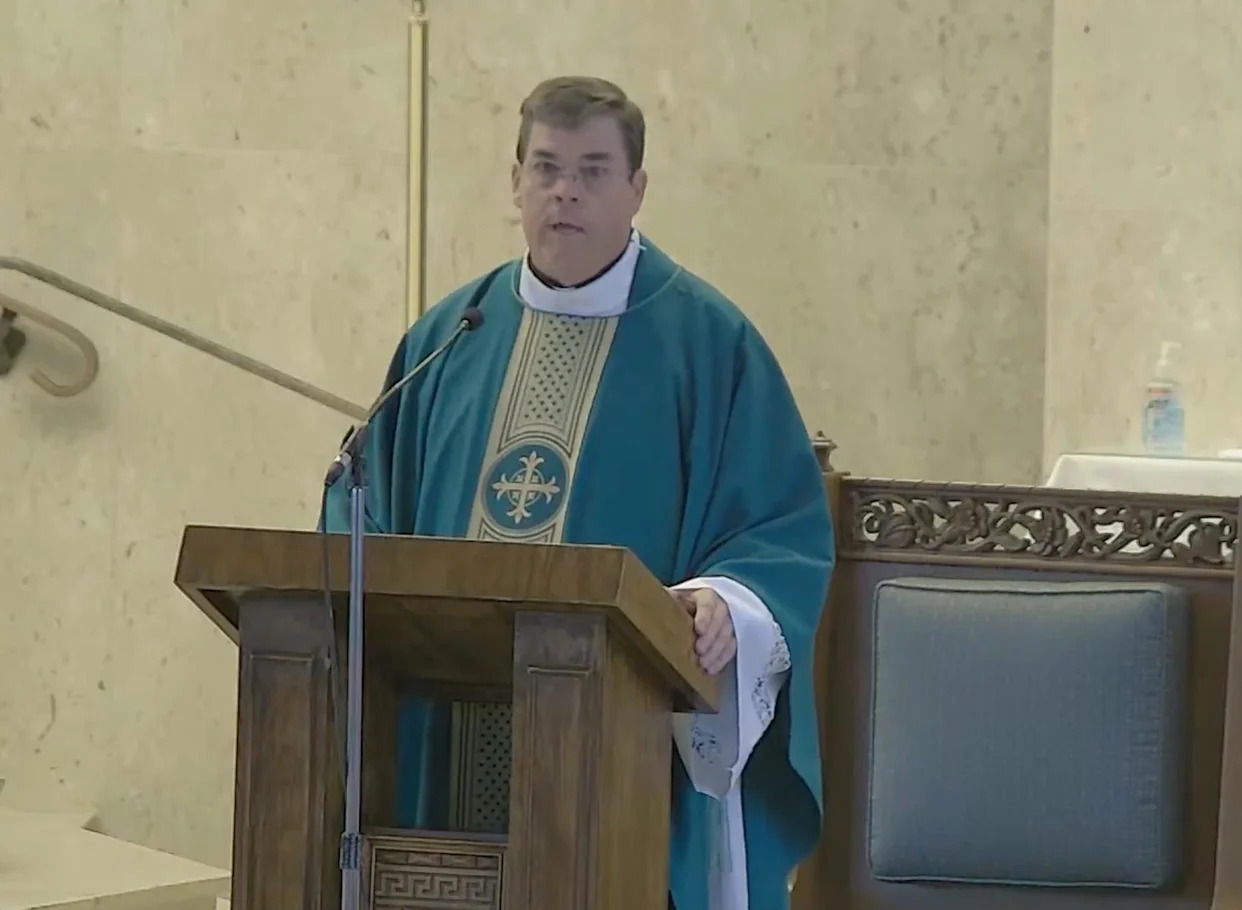

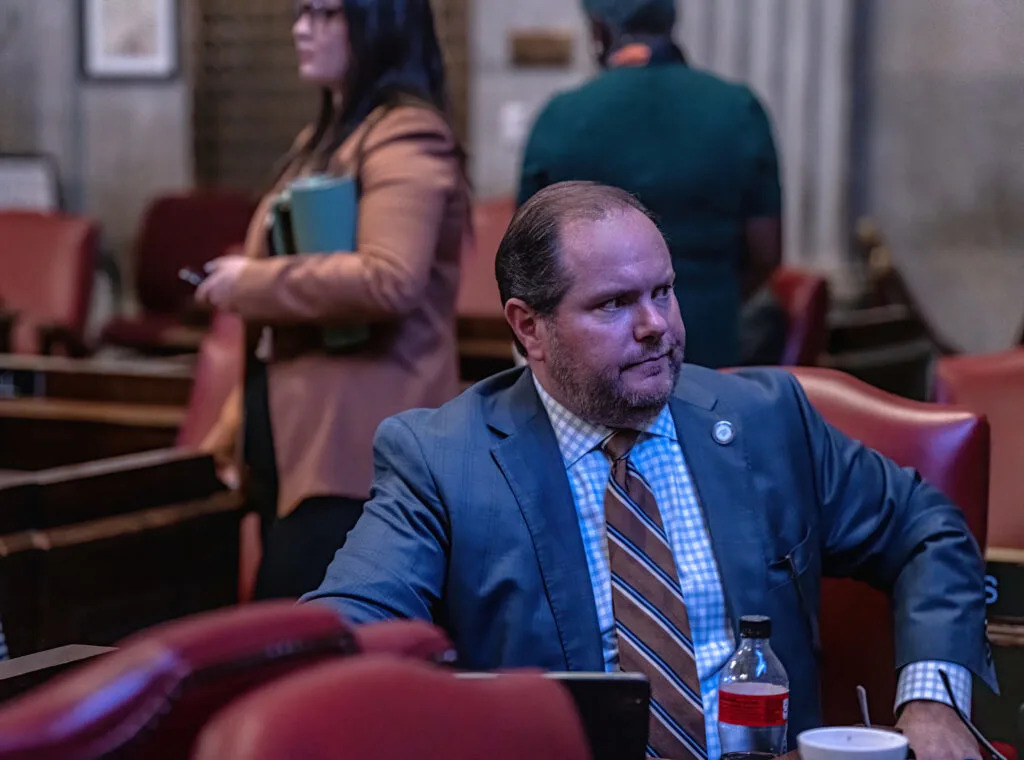

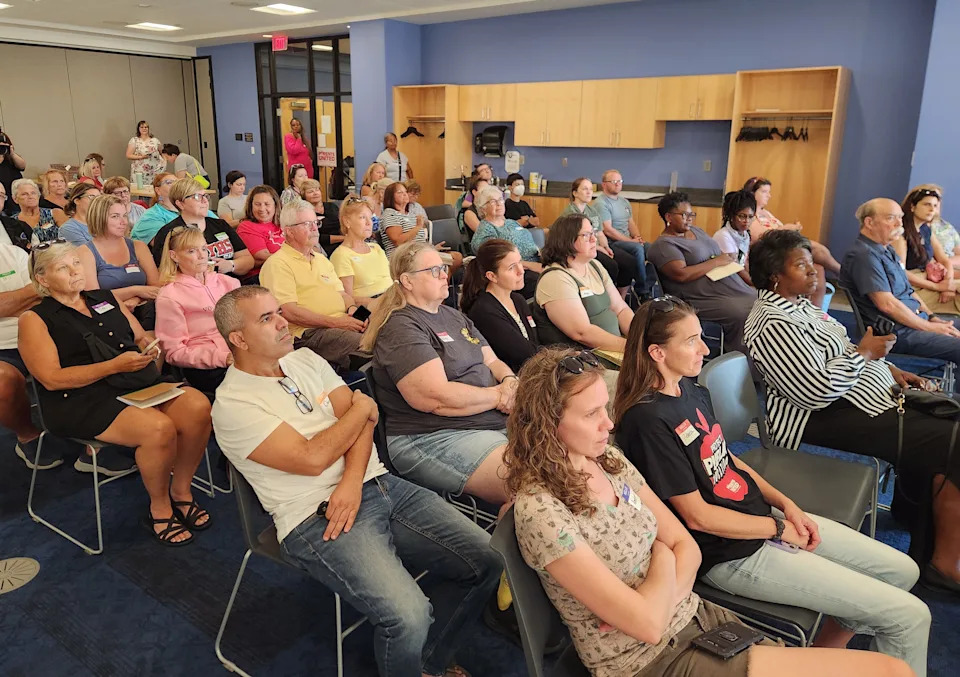
Comments